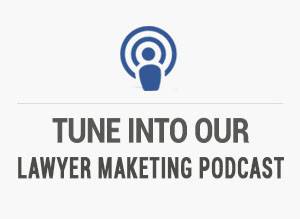Corporate online content marketing is increasingly a cross-departmental effort, according to the results of a new survey of more than five hundred European and North American marketing strategists conducted by the Altimeter Group. That conclusion is based on the rising levels of corporate investment in online marketing technology and paid content promotion. Involving more departments – the entire corporation – in adhering to a unified, central marketing content strategy is now a priority according to seven out of ten respondents to the survey.
In fact, more than four out of ten respondents – 41 percent – reported that their company already operates with a unified content strategy that applies to the entire organization, and 47 percent of respondents said their company “somewhat” has a unified content strategy. Still, seven out of ten replied that they intend to increase the resources and time devoted to making their online marketing fully cross-departmental in 2017.
Survey respondents were also queried regarding how they produce branded online marketing content, and 47 percent said its production is centralized – that content is produced and managed exclusively by a dedicated, centralized online marketing team. Those who answered that their online marketing content production is “decentralized” accounted for fewer than a third – 32 percent – of the survey respondents.
One effect of full cross-departmental participation is that content is now used for more than purely marketing purposes. When the whole company works together to create content, content begins to include sales information, customer service information, and even material on human resources and research and development. More than 40 percent of the respondents to the Altimeter Group survey reported that while their online marketing is centrally managed, a number of departments cooperate to create their company’s online marketing content.
Nevertheless, cross-departmental cooperation regarding content creation sometimes faces obstacles. When asked what is the toughest challenge when developing and implementing their company’s online marketing strategy, 55 of the survey respondents said that lining up all of the company’s departments around a single strategy is the top challenge. Respondents additionally said that accessing the relevant customer data and proving the business value of content items were also top challenges.
WHAT ABOUT PAID ONLINE ADVERTISING IN 2017?
Most Altimeter Group survey respondents – 55 percent – also said that their company will spend more on content distribution and paid online advertising in 2017. Facebook, with 1.79 billion active monthly users as of the third quarter of 2016, was singled out for particular attention. Facebook is the digital platform that corporate marketing strategists believe gives them the most engagement with consumers, so increased spending on content amplification through Facebook is a predictable move.
“Native” advertising, that is, advertising that “matches” the form and function of the platform upon which it appears, is increasingly considered one of the most effective ways to engage consumers. The professionals at an experienced internet marketing agency can help any online marketer create effective native advertising. The Altimeter Group’s researchers conclude that “although a native ad could technically be in any format… this finding shows just how important it is to support brand-produced content with ad dollars.”
WHAT ABOUT MOBILE DEVICES IN 2017?
According to Isaac Hammelburger, Senior SEM Strategist at Webbmason.com, “Going into 2017, the biggest trend is mobile optimized content. With Google announcing Accelerated Mobile Pages (AMP” as well as their new mobile index, content marketers have been working on creating content that would be better served on mobile as opposed to desktop. That means shorter and more to the point articles and fewer pop-ups. Long form articles may work well on a desktop, but mobile users don’t have time to read a 3000-word article. Short and sweet with crush it in 2017.”
Eric Brantner, the founder of Scribblrs.com, agrees that mobile optimized content will continue as an important trend, but he warns that, “Marketers are going to have to rethink design and organization of AMP pages to allow them to convert as well as the original pages did. And that won’t be easy.”
Sean Martin, the Content Marketing Manager at Directive Consulting, says, “The major content marketing trends I see coming up in 2017 are all related to the technological developments of mobile search.” Martin also warns, “Content Marketers and SEO experts alike both need to be focusing on how to target the syntax of mobile users and how to rank for natural language instead of keywords. Otherwise, they will find that their content pages will end up collecting dust on what users will one day call the old internet prior to the mobile-friendly interactive web of today.”
Beth Shockley, the Director of Marketing for Topspotims.com, explains, “Google will be primarily using content on mobile websites to determine rankings in search engine results. Many website owners will need to adapt to the shift in user behavior and Google’s index in 2017 to remain competitive in their industry.” Ms. Shockley adds, “Quality of content and its usefulness to users’ queries will be more important than ever before.’
WHAT ABOUT ONLINE VIDEO MARKETING IN 2017?
Only 53 percent of the survey’s respondents are planning to boost the time and money they devote to video in 2017. In fact, one out of five plan to spend less time and money on online marketing videos. It’s a surprising finding, given that “more video” has been one of the more predictable online marketing “predictions for next year” for a number of years now. In fact, video ranked at the bottom of the survey’s list of the list of the most “engaging” digital content formats.
The Altimeter Group’s researchers explain that many respondents believe video has underperformed. Video can be produced cheaply, but the high-quality video that most corporate marketing demands is costly when compared to other content formats. Still, nearly half of the marketing strategists surveyed intend to hire video production and talent in 2017, although hiring content writers, graphic designers, and data analysts will be a higher priority.
Elizabeth Giorgi, the CEO and Director of Mighteor.com, an internet video production company, says videos will be shorter: “While YouTube tutorials for makeup and fitness were once the dominator in the ‘How To’ category, we think the new trends will be towards one-minute tips – like a single fitness move or a single makeup technique – shared in daily or weekly series on platforms like Instagram.” She adds, “Young people will look for tools to tell micro stories, especially those audiences that really latched onto the platform who are now without a home for their six-second comedy favorites.”
However, Steven Macdonald, Digital Marketing Manager at SuperOffice.com, believes that, “By 2019, 80% of all content consumed online will be through video, and therefore the best marketing experts will aim to get a jump on the competition by shifting almost all of their content production from text to video. At SuperOffice, we’ve grown our blog from 0 to 80K readers per month, but the fastest growth we’ve seen comes from our YouTube channel, which has generated 130,000 views in the last 18 months.”
HOW WILL CUSTOMER DATA BE GATHERED AND UTILIZED IN 2017?
Some type of customer data is used to create online content by 99 percent of the respondents, although precisely how and how much customer data informs content varies widely. More than half of the survey respondents – 53 percent – intend to increase spending on obtaining customer data in 2017. However, fewer than 40 percent of the survey’s respondents said their company creates online marketing content based on customer information compiled cross-departmentally.
Social media metrics and website analytics are the most frequently used sources of customer data by online content creators. Still, in many companies, having quick access to customer data that’s immediately relevant is a genuine challenge for those content creators, according to the Altimeter Group survey. Hiring data analysts with a marketing orientation will be a top priority for many companies in 2017.
Dimira Teneva, Content Manager at Metrilo.com, summarizes the trends for 2017. Teneva says, “Growth in Asia and wider digital adoption” means “content should be tailored for a very diverse demographic group… Since shopping is moving to mobile, content cannot be long articles. Interactive infographics, guides, quizzes, aggregations like Polyvore are much more convenient to be consumed on smaller screens. To provide more product information, video and animations will be a requirement… Content should be used for customer retention, not just lead generation. A shop should be more than a shop now and information provided to customers can make all the difference.”
“Content marketing for 2017 must captivate the audience, not just placate to the algorithms. We want to increase convertible click-throughs, not bounce rates,” says Don Osmond, Managing Partner at OzComm Marketing. “Why people purchase what they purchase is paramount; the what, where, when, and how are merely circumstantial. Businesses that align their why with their customers will find increases in ROI (return on investment).”
Most companies also intend to boost their investments in tools that will enhance content delivery and content personalization in 2017. This is an important aspect of online marketing where many companies can make improvements. Barely a third – 35 percent – of the respondents to the Altimeter Group survey are confident that their company can deliver personalized content in real-time to their customers. A professional internet marketing agency can help marketers effectively personalize the content and delivery of their online marketing.










